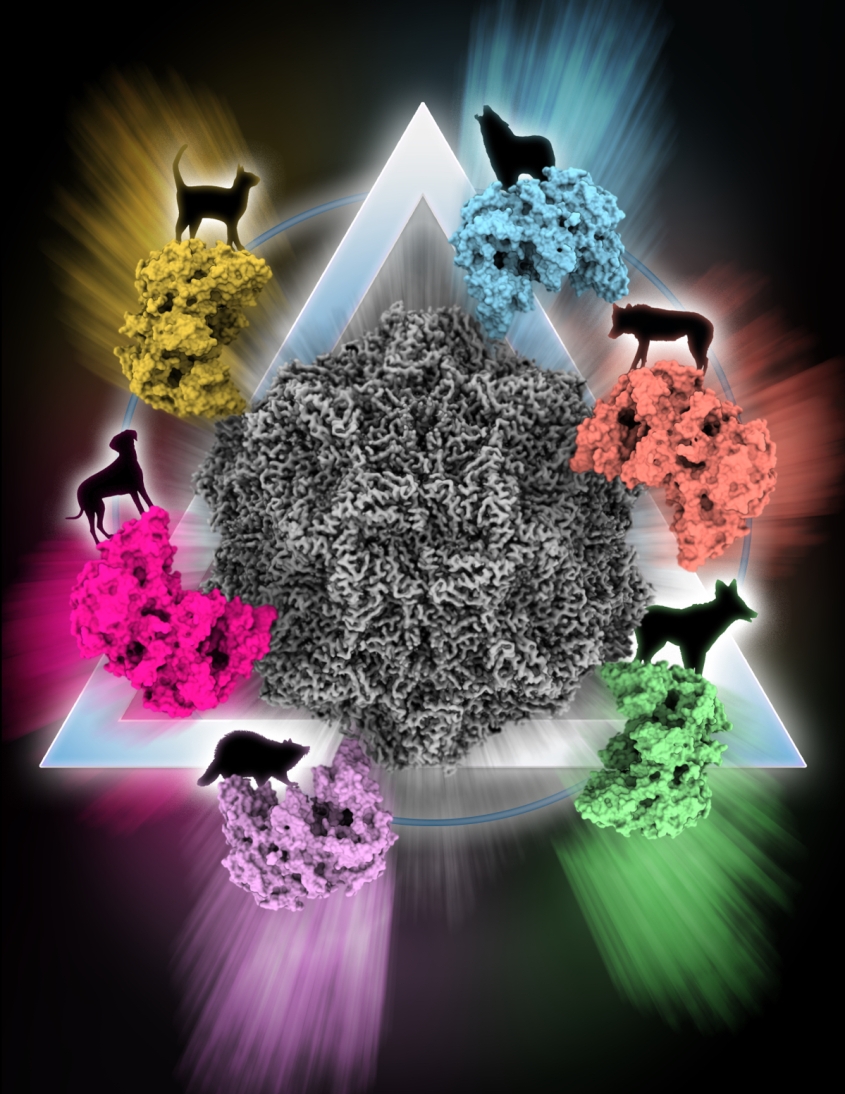Scientists pinpoint how the deadly canine parvovirus learned to infect dogs in the 1970s
Note: This news item features content from another page. View the featured content for this news item.
Canine parvovirus, a highly contagious and deadly virus of dogs, initially infected cats and other animals long before it acquired a few mutations and started a worldwide epidemic in the late 1970s. Now, a team led by the Baker Institute’s Dr. Colin Parrish have worked with Dr. Susan Hafenstein’s laboratory at Penn State University to show exactly how parvovirus enters canine cells, and it’s a surprisingly wobbly interaction.
In a new paper in Proceedings of the National Academy of Sciences, the researchers report that the virus attaches to the pointy end of the transferrin receptor, a protein that all cells use normally to take in iron, and then the virus sways back and forth. It’s possible that this “rock and roll” action causes the virus to change shape and be transported inside the cell, which is the first step on the pathway to infection.





